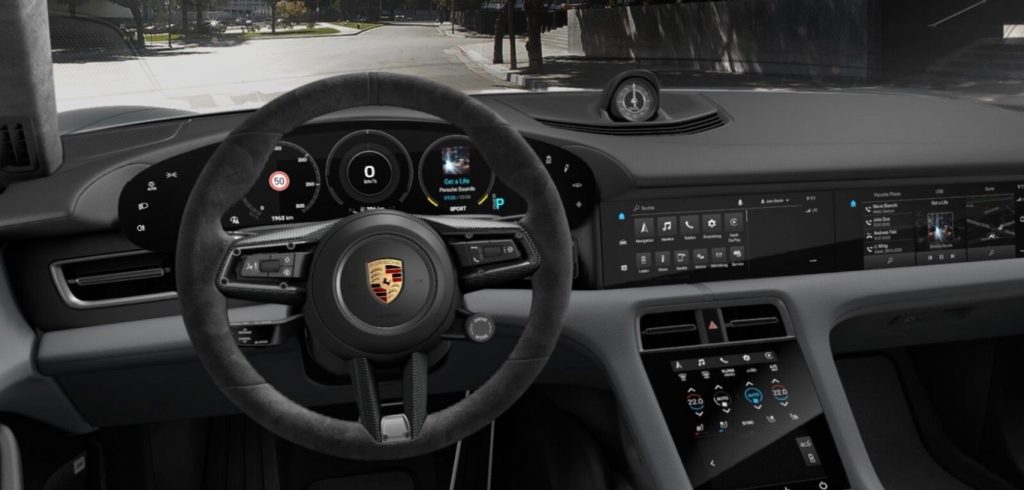One distinctive feature of the Porsche Taycan introduced to the vehicle in June 2020 is a windshield head-up display (HUD) that projects information directly in the driver’s field of vision. To create this HUD projector and bring it to market within a short timeframe, Porsche collaborated with Nippon Seiki, an automotive HUD supplier.
Nippon Seiki selected EB Guide from Elektrobit (EB) as a suitable tool for the HUD’s software and graphical framework development. As the company already had several years of experience creating advanced cluster instruments with the HMI development toolchain from EB, it says this was the logical tool with which to realize the HMI for the Porsche HUD.
“With EB Guide, we had the perfect tool to pick up speed in development very quickly and furthermore reduce time to market by its capabilities to test at an early stage, adapt to any customer-specific needs and through its easy deployment and integration process,” said Reinhard Rehner, software engineering manager at Nippon Seiki. “And knowing that EB as a full-service supplier can support and back up with engineering at any time needed, gave us confidence right from the beginning to be able to deliver the system to Porsche in time.”
EB provided Nippon Seiki with a graphical interface to develop both the UI look and feel as well as its logic behavior, reducing the need for software coding and enabling the development team to focus on their core tasks. Moreover, thanks to an open architecture, the company says its team was able to enrich the system framework and create custom visual effects for the display. Additionally, through the use of features such as built-in internationalization and skinning capabilities, Nippon Seiki states it ended up with a flexible and combined solution that fulfilled Porsche’s luxury experience requirements.



